There are quite a few films that fall into a certain category. The kind of movie you are watching and you say to yourself, “am I reading too much into this or is this really gay?” There’s that funny monologue by Quentin Tarantino in Sleep with Me where he dissects the movie Top Gun and all the gay subtext. Even Top Gun’s producer Jerry Bruckheimer addressed Tarantino’s rant in the indie film: “When you make a movie, people can interpret it in any way they want and see something in it that filmmakers had no idea they were tapping.” I remember getting into discussions about certain films and repeatedly hearing the phrase, “that movie was so gay,” and not in the derogatory sense. So, here’s a toast to the subversive movies we all know and love.
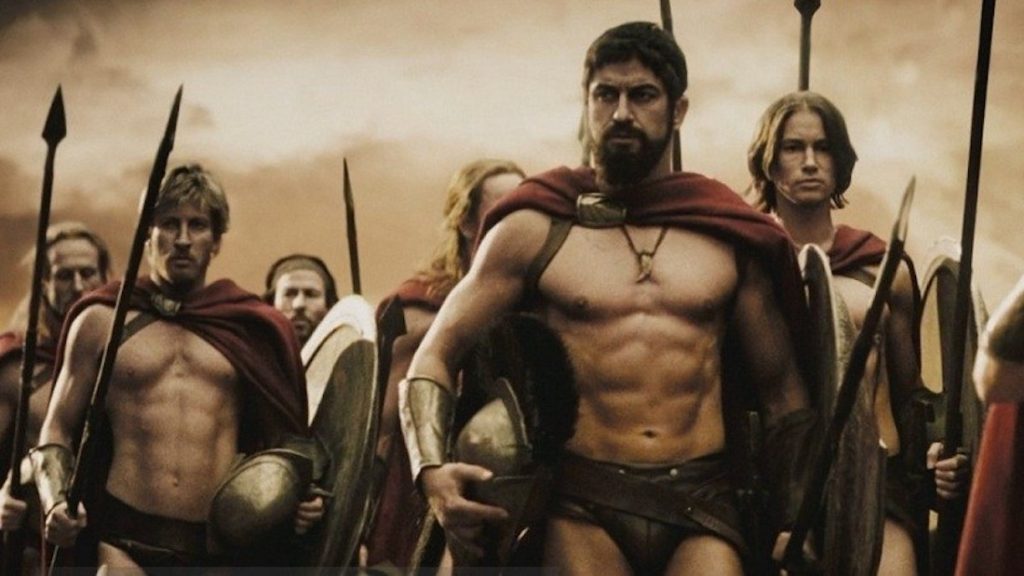
300. A beefcake bonanza, based on the battle of doomed, vastly outnumbered Spartans against the Persians at Thermopylae in 480 B.C. Frighteningly fit Gerard Butler leads the all-male posse of he-men into battle. Others beefy warriors include Dominic West, Michael Fassbender and Vincent Regan. Historically many of the fighters were actual lovers, but this is all butch, glistening muscle and filmed with a weird patina- almost like it’s an animated version of Frank Miller’s graphic novel. Despite all the ultra-violence, it’s still pretty hot.
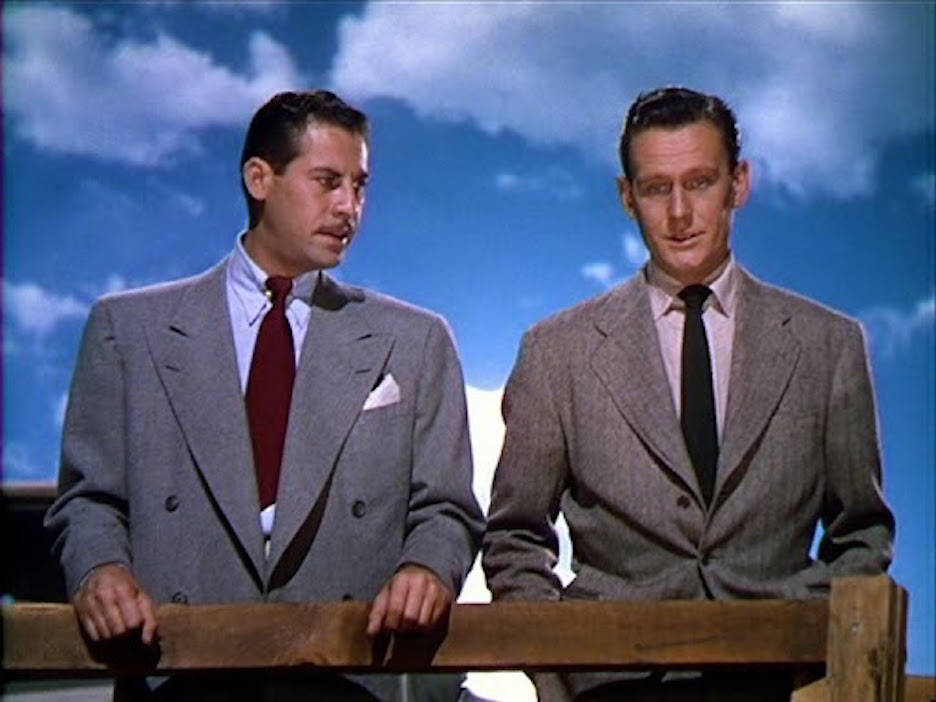
Desert Fury. Truly perverse 1947 desert-noir ripe with so much queer subtext you can’t believe your eyes. John Hodiak plays Eddie Bendix, a gambler and hood vacationing in a desert town. Eddie has a male companion he has lived with for years and years- Johnny, played by Wendell Corey, and when Paula (Lizabeth Scott) comes between the two men, it makes for a lethal Freudian stew. Wait until you get to the story of how the two men first met: Eddie was broke and starving and Johnny picked him up in an automat on Times Square, fed him ham and eggs, and took him home.
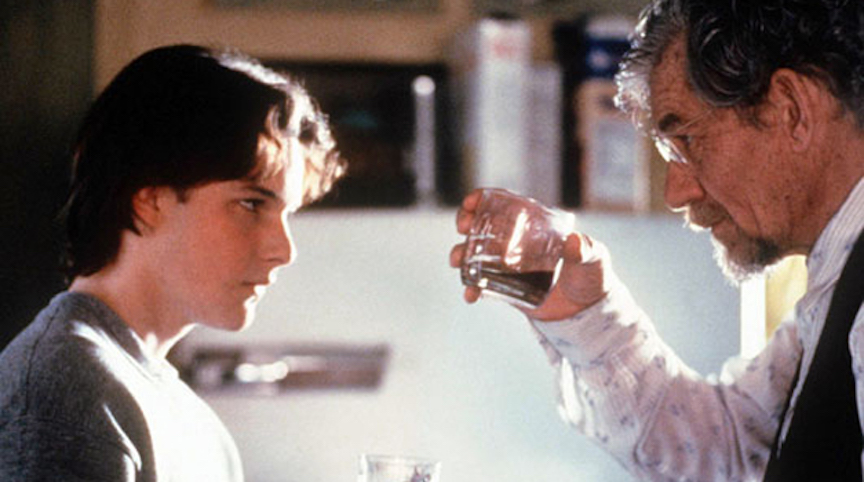
Apt Pupil. A bone-chilling tale (based on a Stephen King novella) about a 16-year-old (Brad Renfro), who becomes morbidly fascinated with Nazism while studying the Holocaust in school. While traveling on a bus one day he recognizes an old man (Ian McKellen) to be a former Nazi guard and follows him home, blackmailing him into telling him “everything.” McKellen on the surface looks like a harmless, wheezing, old codger- but as the film progresses his malignancy is palpable. And Renfro’s fresh-faced innocence belies his frightening eagerness to vicariously experience the Nazi’s atrocities. What makes this film so deeply disturbing is that it’s about how easy it is to sow the seeds of evil in a fertile young mind. But it also feels like a film about a chicken hawk. No wonder it was directed by Bryan Singer.
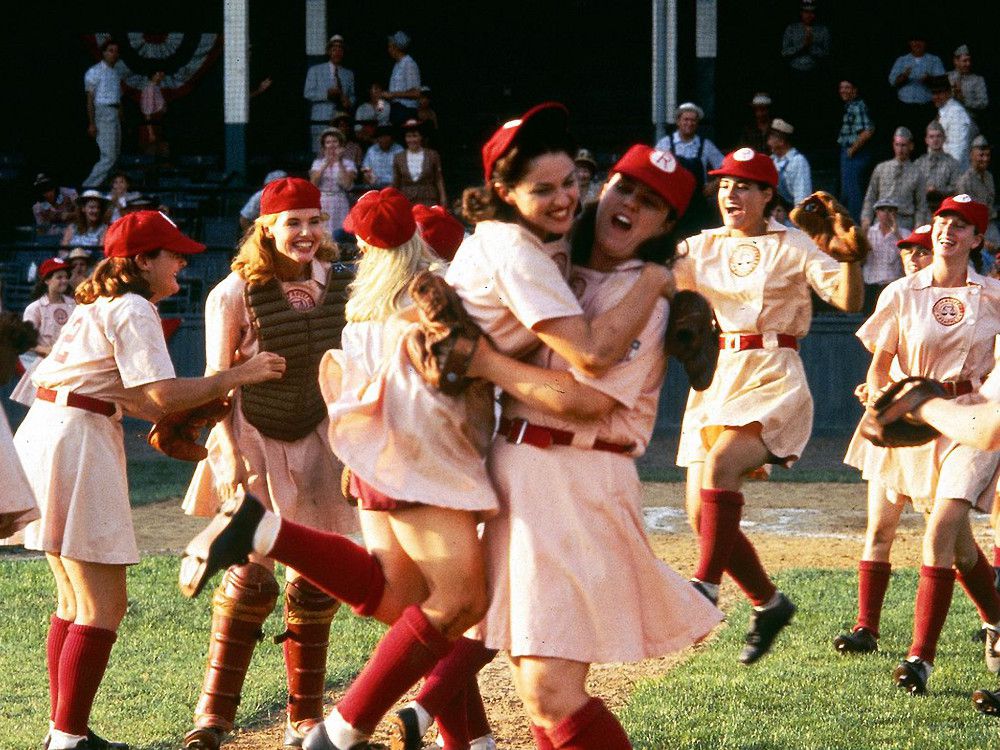
A League of Their Own. A flashback to 1943 when professional sports needed to buoy war-time spirit by creating an all-female baseball team. They round up pretty farm girls (Geena Davis) and taxi dancers (Madonna) and bouncers (Rosie O’Donnell), among others, and are managed by a former slugger (Tom Hanks) in this sentimental, feel-good comedy of gal-on-gal action. The movie than flash-forwards to a reunion and to find out what happened to the plucky team players. Yes, it’s an empowering story of female athletes, but you can’t tell me this wasn’t also empowering to young, closeted, sports-minded gay girls everywhere.
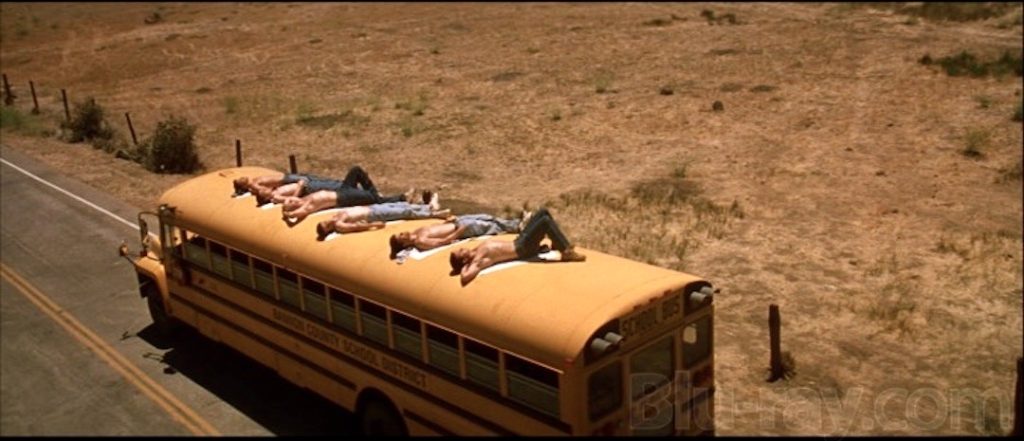
Jeepers Creepers 2. From the first shot of all these shirtless male youths sunning themselves on the roof of their stranded school bus, all bets are on that this is filmed through a queer lens, and with scandal-plagued director Victor Salva at the helm, that’s a given. But this creature that reappears every 23 years to snack on humans only seems to have his eye on the lads for some reason. There is one telling moment when his face scarily appears outside the window of the bus and lasciviously licks on the glass at his future, hunky, victim.
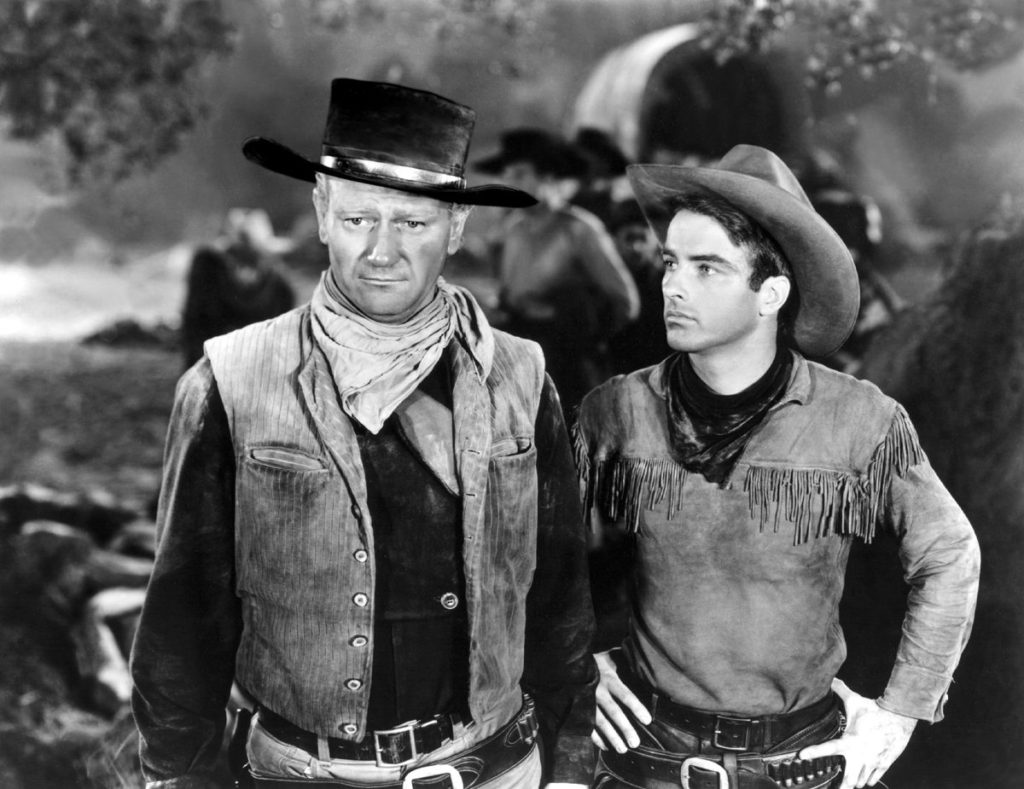
Red River. “Stop fighting!” Tess (Joanne Dru) screams at the end of the classic Howard Hawks western, a remark aimed at the forever battling Thomas Dunson (John Wayne) and Matt Garth (Montgomery Clift). This is about the first cattle drive from Texas to Kansas along the Chisholm Trail. But it’s really about the fraught relationship between the tyrannical cattle driver Dunson (Wayne) and Matt (Clift), an orphaned boy who wandered into Dunson’s camp as a child and grew up to openly rebel and take over the drive to Kansas. It ends with a fist fight that is interrupted by Tess. “You two know you love each other,” she screams at them and so does the audience.
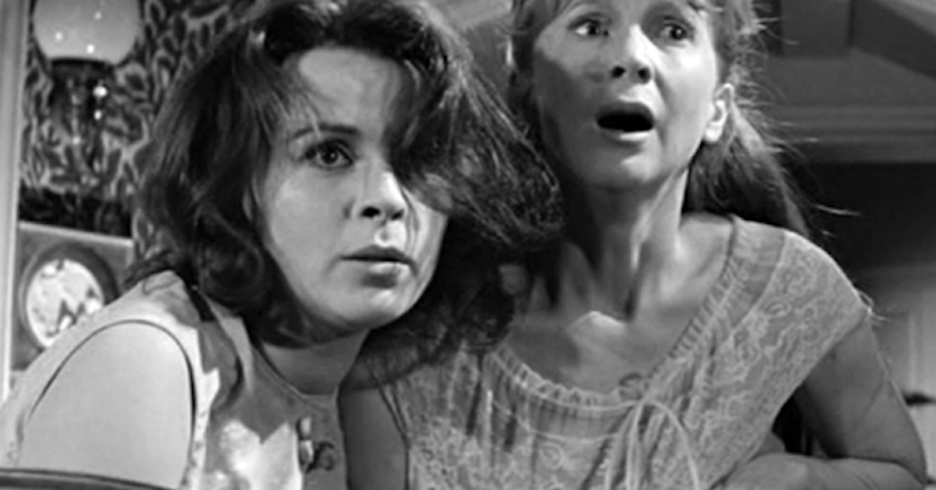
The Haunting. A great, spooky Robert Wise film, based on a Shirley Jackson novel, about a group gathered by a leading scientist at a very haunted mansion to test theories about whether this kind of ghostly activity is real. Julie Harris plays the frustrated spinster who rooms with the more-worldly Theodora (Claire Bloom), who is clearly implied to be a lesbian. But the tender relationship between the two women has always fascinated me. You just want to smack the Julie Harris character and scream, “oh, fuck the ghosts- just get it on with Theodora and you’ll be fine!”
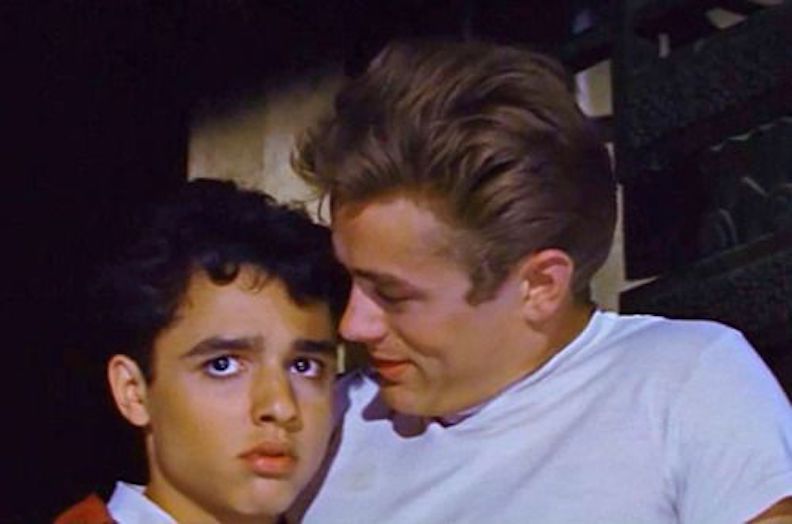
Rebel Without a Cause. Nicholas Ray’s unforgettable 50s teen-angst drama, with the ethereal, androgynous James Dean as the ultimate sensitive, misunderstood kid- Jim Stark, who meets the even-more sensitive Plato (Sal Mineo) at school and befriends him, causing Plato to follow Jim obediently around like a lovesick puppy dog. There are great touches in this classic film- like Plato having a picture of Alan Ladd in his locker. Natalie Wood’s position in this trio could also be read as “hag.”
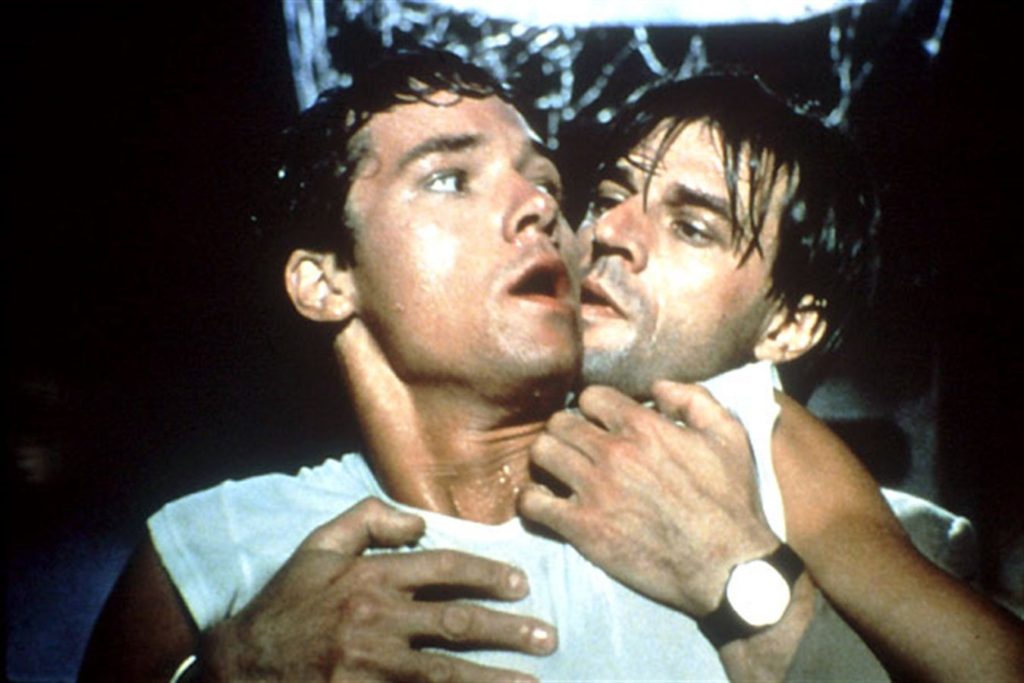
The 4th Man. A surreal 1983 film by Paul Verhoeven (RoboCop/Basic Instinct). An acclaimed, alcoholic novelist (Jeroen Krabbe) is seduced by a blonde black-widow spider of a woman (Renee Soutendijk), while secretly lusting after her boyfriend. Crammed with religious symbolism and nods to such artists as Magritte and Dali. It’s a psycho-sexual field day with tons of gay subtext.
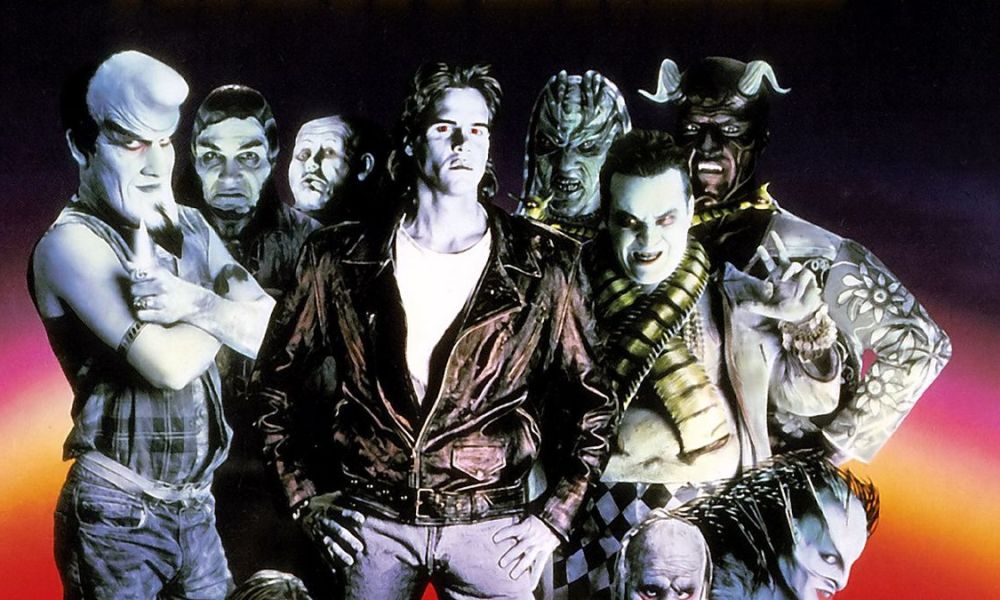
Nightbreed. Clive Barker’s wildly ambitious 1990 film stars Craig Sheffer as a troubled young man set up as fall-guy for a series of murders. He flees into a subterranean, monster-filled world called Midian. The film was heavily edited by the studio and bombed on its release. Mercifully, a complete, uncut version was recut by Barker and survives on Blu-ray. This epic supernatural saga is filled with a staggering array of creepy creatures (even more varied than in Hellraiser). Barker does slip gay subtext into his films- Hellraiser is chock-full of S & M imagery, and in Nightbreed, Midian seems a secret realm filled with weirdos, outsiders and misfits. In other words, Provincetown in the 1970s.

Gilda. The weird undercurrent of hostility that Glenn Ford’s Johnny Farrell feels for Rita Hayworth’s Gilda can be read in several ways. Ford plays a sweaty gambler in Buenos Aires who is rescued and taken in by the elegant Casino owner Ballin Mundson (George Macready). Johnny becomes Ballin’s devoted casino manager and states, “I was born the night you met me.” But Mundson returns from an extended trip suddenly married to Gilda (Hayworth) and Johnny hits the roof. It is implied that Johnny and Gilda had a disastrous past relationship, but I’m not buying it. Even Glenn Ford remarked in an interview that he and Macready “knew we were supposed to be playing homosexuals.”
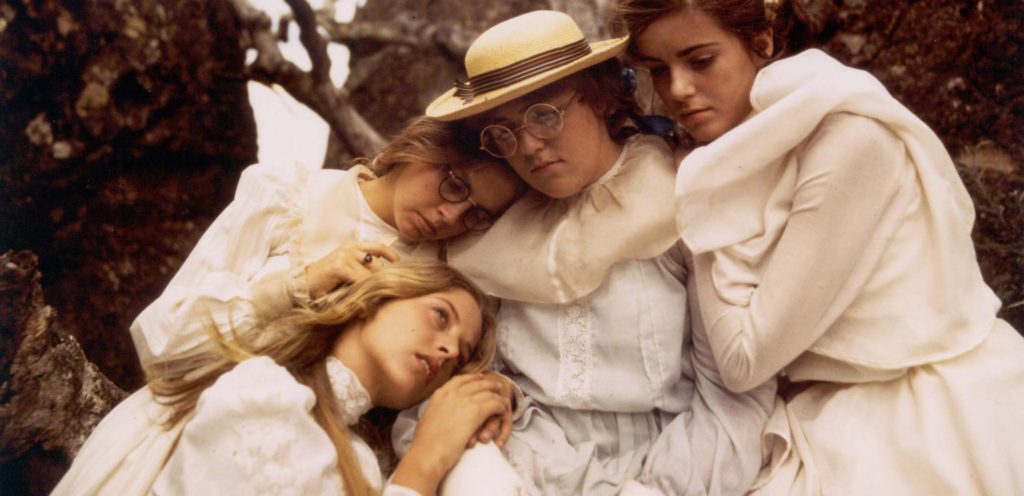
Picnic at Hanging Rock. Director Peter Weir’s film about an actual mysterious occurrence in Australia set on Valentine’s Day in 1900, about a fateful girl school outing. The young ladies are all attired in stark white dresses, corseted and carrying parasols, accompanied by their teacher to a strange volcanic rock foundation. This is where some of them vanished without a trace. We get caught up in the relationships between the women, especially orphaned Sara, and her same-sex passion for Miranda, who seems to appreciate the attention. Everything in the movie is ambiguous and sensual and I suppose interpretation is in the eye of the beholder.
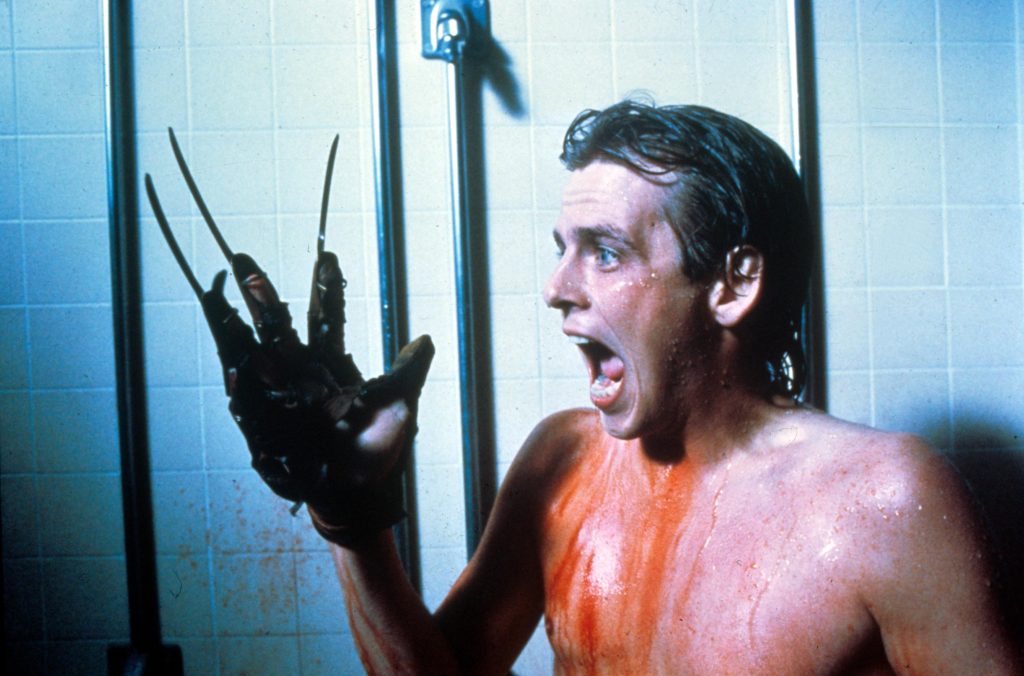
A Nightmare on Elm Street 2: Freddy’s Revenge. Called the gayest horror movie ever, Mark Patton stars as Jesse, the new boy in town, whose parents bought “that” house on Elm Street. In no time, he has nightmares of Freddy Krueger, with the razor-fingered glove. This time Freddy is using Jesse as his killing machine. Jesse sleepwalks to a gay bar where he finds his gym coach, who brings him back to the school to run laps. The coach is attacked by all types of ghostly, flying balls in his office. Then he is stripped naked, tied to the shower with a jump rope, and slashed to death. What the hell is going on? Later Jesse is making out with his girlfriend and suddenly jumps away and runs over to a male friend’s bedroom begging him to watch over him while he sleeps. Unfortunately, Freddy emerges and kills his sexy classmate in his underwear. What is this really about? Gay panic? Poor actor Mark Patton was excited about getting the lead in this film until the movie became a camp hoot with audiences. He chronicles the hell this was for him, a closeted gay actor in the 80s, in a fascinating documentary- Scream, Queen!: My Nightmare on Elm Street.
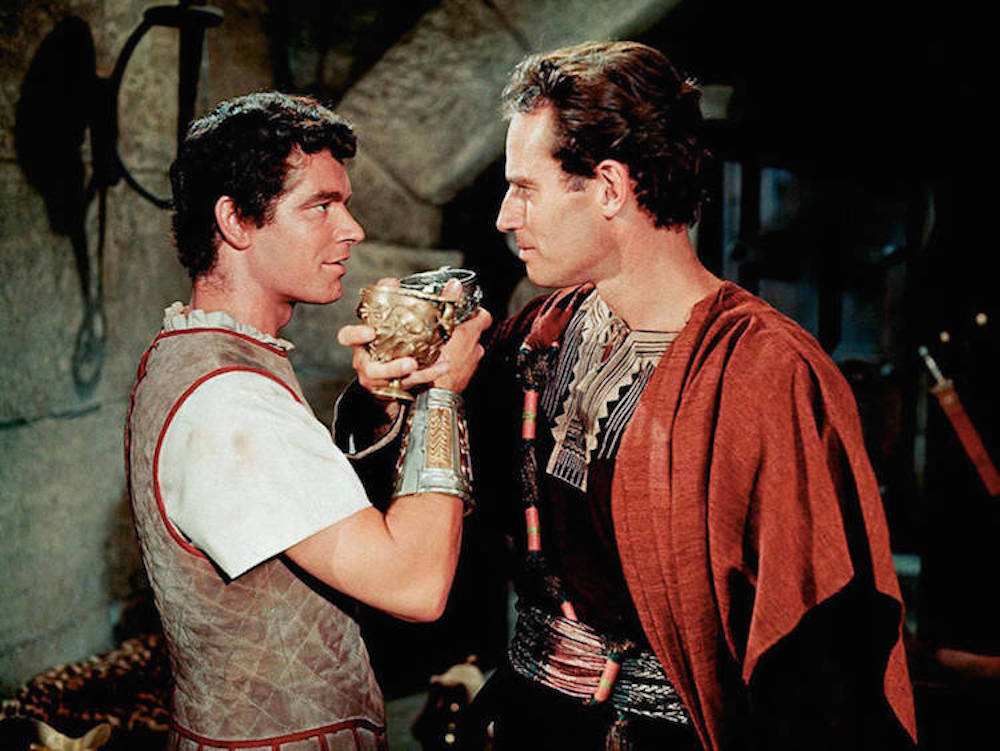
Ben-Hur. When I think of this 1959 biblical epic directed by William Wyler I immediately think chariot races. But it was Gore Vidal, an uncredited writer on the film, who came up with this back story about the relationship between boyhood friends turned rivals- Messala (Stephen Boyd) and Judah Ben-Hur (Charlton Heston). Vidal surmised, “I proposed the notion that the two had been adolescent lovers and now Messala has returned from Rome wanting to revive the love affair but Ben-Hur does not.” Of course, this back story was only imparted to actor Stephen Boyd who was warned never to tell Charlton Heston. And that’s exactly how Boyd played it.
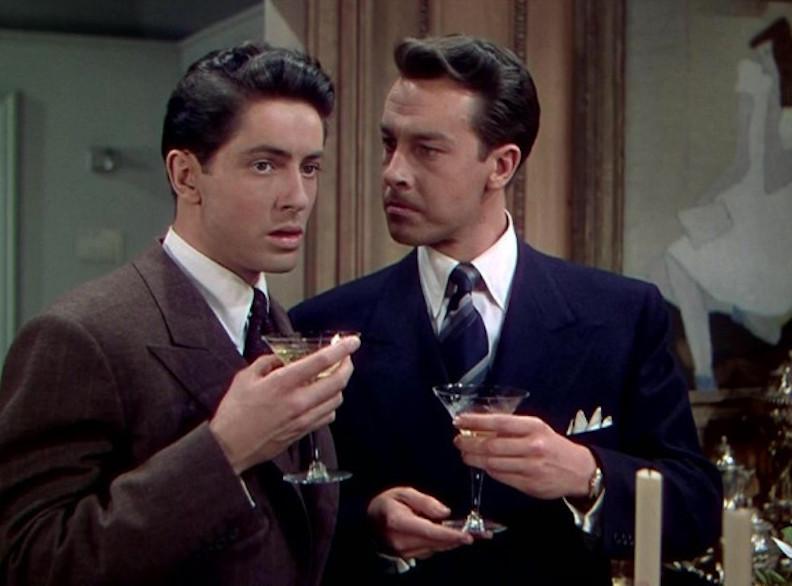
Rope. Alfred Hitchcock riffed on the famous Leopold & Loeb murder case to tell this tale of two well-heeled roommates (Farley Granger & John Dall) who commit a senseless murder to prove some Nietzschean ideology. Then they callously invite people over for dinner at their Greenwich Village apartment to break bread over the corpse (stuffed in a trunk in the middle of the room). It was an excuse for Hitchcock to shoot the film with a gimmick (of making it look like one continuous take) but it was the implied gay subtext that he really enjoyed, especially since the two leads were presumably gay themselves. Strangers on a Train had similar gay vibe in it. And then there’s always the deliciously butch Judith Anderson in Rebecca, still unwholesomely besotted by her late mistress. Hitchcock delighted in sprinkling these perverse breadcrumbs in his films. Probably for all the wrong reasons, but who cares?
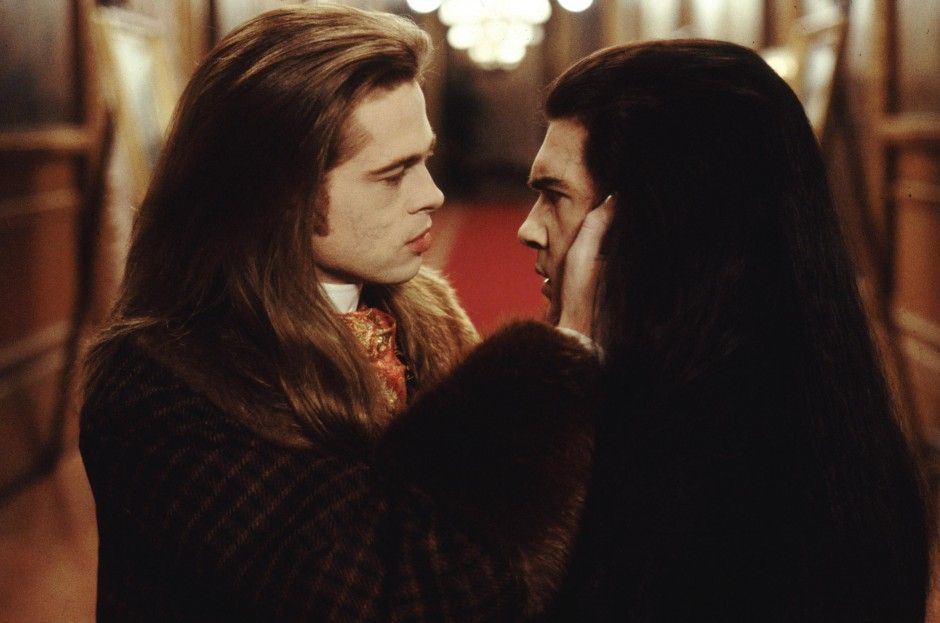
Interview with a Vampire. Author Anne Rice created a whole mythology with her vampire novels. Her aristocratic blood-drinkers like Lestat, his protégé Louis and their child-vampire Claudia, captivated readers, along with the Gothic eroticism of her prose. Director Neil Jordan approaches the material with the same fervent eye, while adding a spin of dark humor. Tom Cruise is a bit of a lightweight as the vampire Lestat, but Brad Pitt as Louis, the New Orleans widower turned blood-drinker is riveting throughout- his scenes with Antonio Banderas (who plays Armand) are electric with the kind of erotic tension that seeped from the pages of Rice’s book.
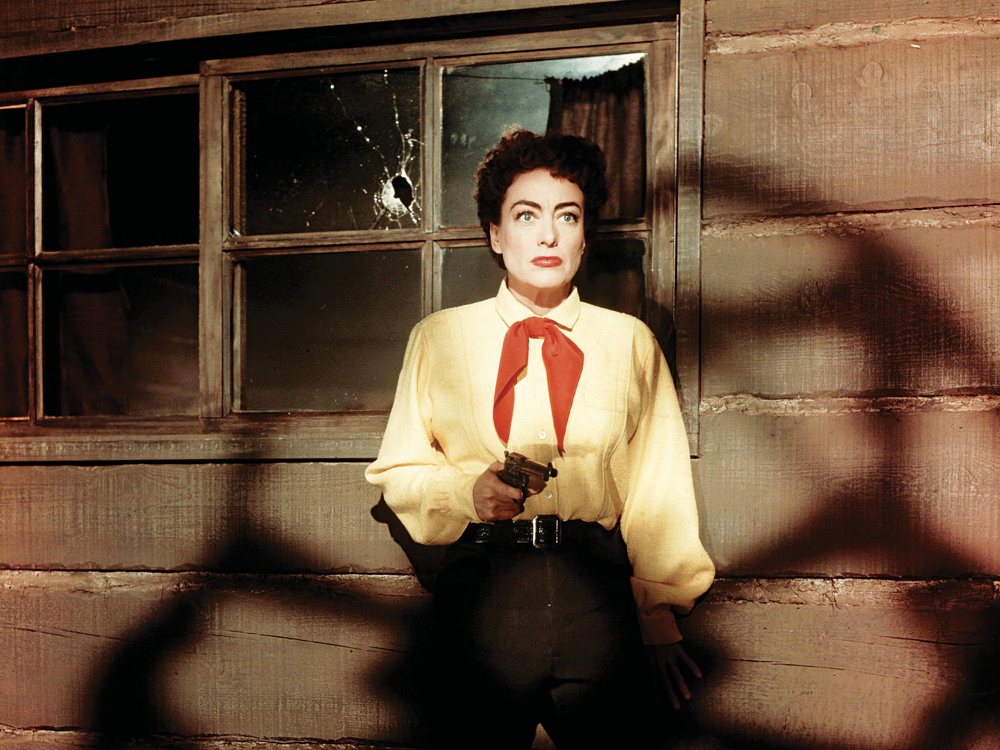
Johnny Guitar. One of the great Freudian westerns starring a regal, extremely butch Joan Crawford as Vienna, the owner of a saloon in the middle of nowhere. Her arch enemy is Emma (Mercedes McCambridge), and the two women are locked in a deadly battle over a man. Sure they are. Sterling Hayden plays the gunfighter/guitarist and past love of Vienna and director Nicholas Ray uses primary colors to heighten his existential, truly bizarre film.
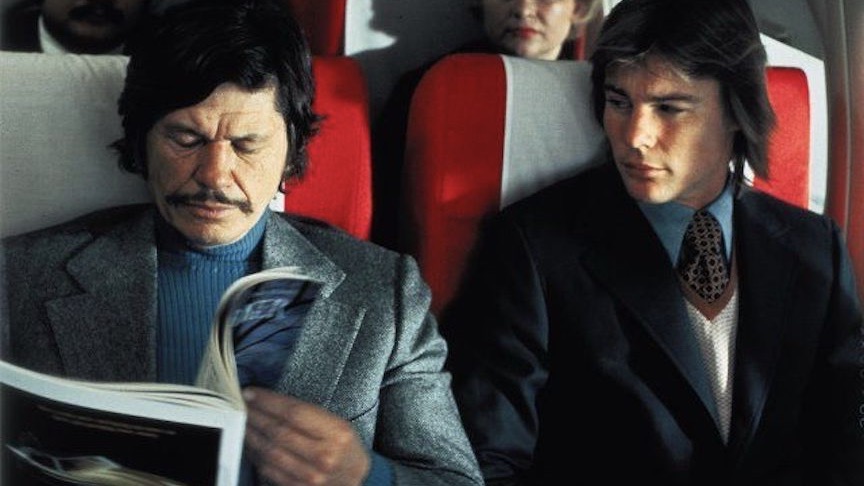
The Mechanic. Michael Winner’s 1972 twisty, action thriller is about the insidious relationship between an assassin (Charles Bronson) and a young apprentice (Jan-Michael Vincent) he takes under his wing. Supposedly the original script alluded to a more overt homosexual union between the two men, but that was too hot for actors or studios to touch at the time, so it was omitted. However, there is enough subversive sexual tension in the film to have major film critics pick up on the fact there was more going on than just male bonding. You really want to ask- is that a gun in your pocket or are you just glad to see me?
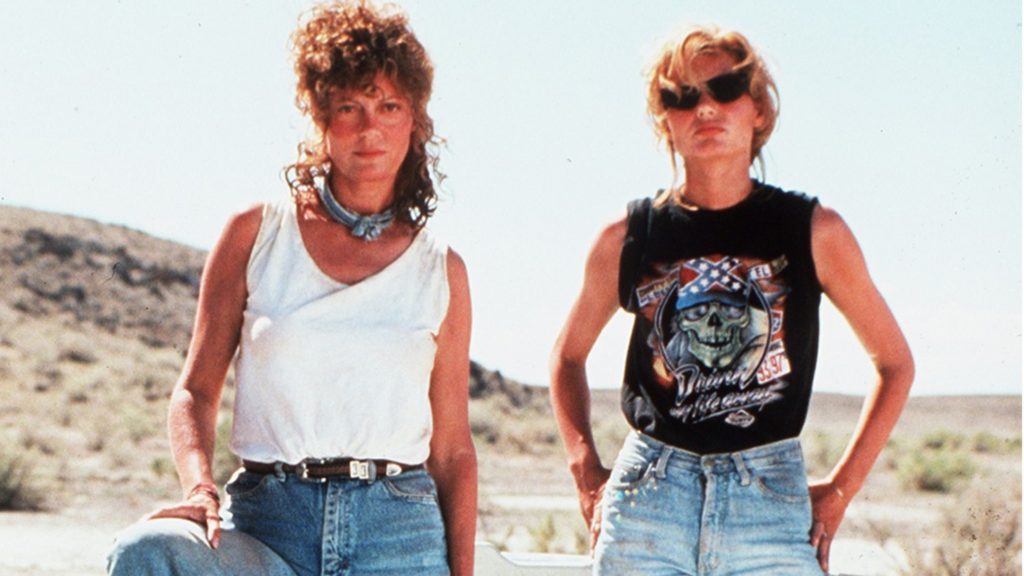
Thelma & Louise. This is definitely a by-product of gay appropriation. Good friends Thelma (Geena Davis) and Louise (Susan Sarandon) take off for a girl’s only weekend. One night while they are at a roadhouse, Thelma meets a stranger who tries to rape her in the parking lot and Louise comes to her rescue by shooting the man dead. They end up going on the run, chased by the FBI and state troopers. It’s been said that reading gay subtext into this film is to miss the point. But is that really true? Thelma sheds her stifling relationship with her husband and both women on the lamb open themselves up in so many ways, finally freed from the toxic masculinity around them. They literally fly off into the sunset, and many women did not see this as a bummer of an ending at all.
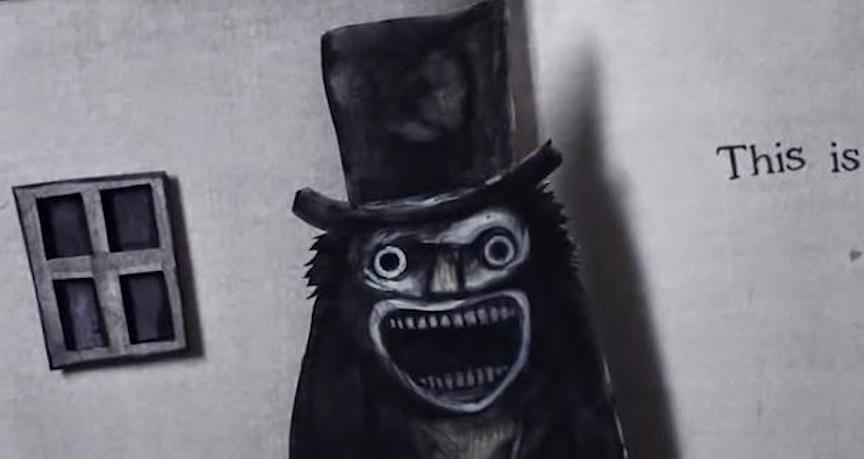
The Babadook. How did a creepy character in a children’s book who springs to life and terrorizes an Australian mother (Essie Davis) and her child become a gay icon? When I first heard of this I was really dumbfounded. I admit, the fearsome, supernatural entity does sport a jaunty top hat. But here is something that really steamrolled on the internet, from memes, hashtags, Tumblr etc. The movie is sometimes cheekily listed in the “LGBT” section of films online. True, the children’s book reads “you can’t get rid of the Babadook.” That’s defiantly gay enough. And at the end it mercifully doesn’t get exiled to the closet. But it does end up psychically chained in the basement. Is this gay progress? I’m not so sure.

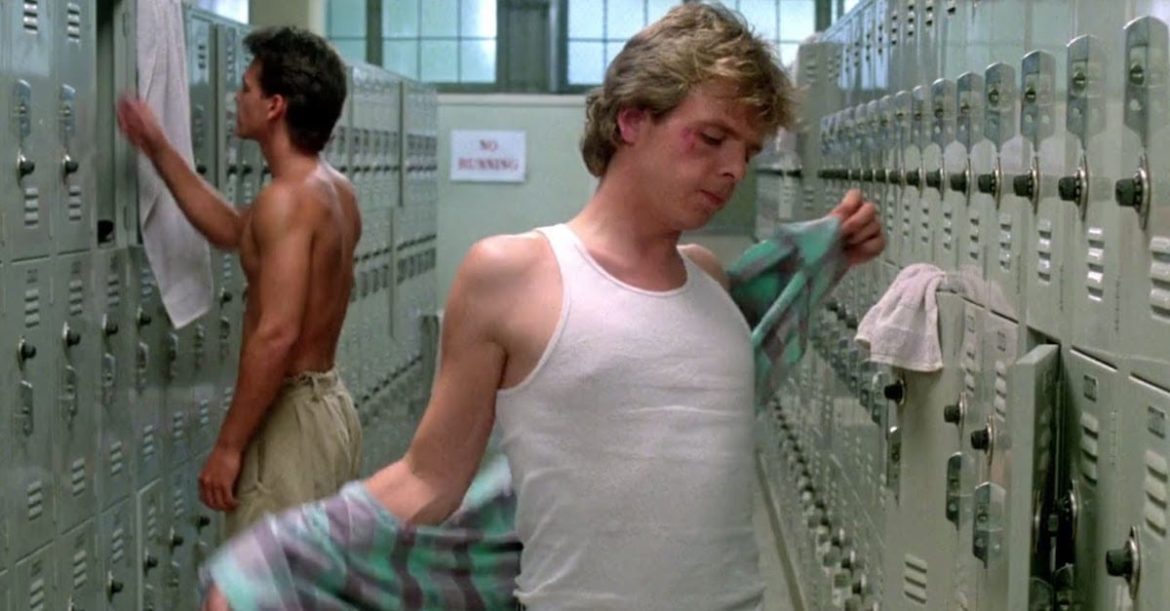
Dennis
This is so Good!!!!!!!
Loved your subversives, especially Desert Fury and Nightbreed.
Laughed out loud when you compared the misfits and weirdos in the film to Ptown in the 70s.
Great column, Dennis. Every time I see the name Joanne Dru, I remember that short-lived TV show “Guestward Ho” in which she starred and J. Carroll Naish played the scalawag Indian named Hawkeye. Also, she was Peter Marshall’s (Hollywood Squares) sister. A fun read. Natalie Wood, “Hag” made me laugh outloud.